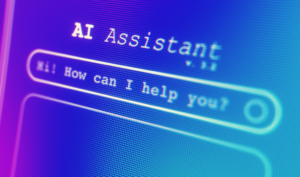
Why Be a Thought Leader if You’re in HR Tech? 4 Key Reasons
If you’re a leader in HR Tech, you want to be known for your expertise and your perspective. That’s how you build trust in your

If you’re a leader in HR Tech, you want to be known for your expertise and your perspective. That’s how you build trust in your

Video content is everywhere—from newsrooms and social media feeds to the bright lights of Times Square advertisements—and now it’s becoming a staple in the workplace.

AI has become a readily available tool for employers with a spectrum of high value use cases, including risk management. A recent poll showed that

Among the many trends that are rapidly redefining work, perhaps the most consequential for HR is the arrival of artificial intelligence (AI). But this points

Sponsored by Workleap Officevibe In most organizations, the human resources team is a primary point of contact throughout the employee journey. From the very first

The push/pull challenge of change management is never easy to embrace. After all, resisting disruption is human nature. But the process of unlearning and relearning

As technology continues to evolve, so does the way we connect and work with others. One of the newest advances in technology is the metaverse,

Sponsored by: Neocase Did you know more than 160 million people are employed in the U.S.? Unfortunately, however, rising turnover is eroding workforce retention. In

Sponsored by: ThoughtExchange For several months, we’ve been sharing insights from our partner ThoughtExchange. They’ve done some fascinating research on Gen Z employees, employee experience,

Sponsored by: SAP Concur The next chapter of the future of work – hybrid work—is underway as businesses return to the physical office in some

The pandemic has affected the way we live and work and accelerated our transition to the digital world. In 2020, 30% of employees were working

Podcast Sponsored by: Accurate Background How is background screening impacted in an increasingly remote-first world of work? No doubt, the pandemic has reshaped the workplace. And

Podcast Sponsored by: Tydy Considering a new HR system for your company? Finding the right HR system has become a critical piece to a successful,

Over the past 24 months, IT teams have been burdened with many unprecedented challenges. Most notably, a rising number of security concerns. But enhancing security

Small but mighty HR teams are under increasing pressure to perform with fewer and fewer resources. Typically, small budgets mean that functions like payroll, time

The enterprise and the workplace are increasingly influenced by technology and technology-driven processes. With digital upskilling becoming an increasing priority, this often comes with a

I’m often asked to give my predictions for what the new year will bring to the future workplace. We’ve seen changes we never imagined, from

The workplace is becoming more diverse as organizations offer remote and hybrid work options and build a global workforce. With these big changes comes a

For the first time since the onset of the pandemic, the United States experienced a significant uptick in job availability. This resulted in a lot

As we all know, flexibility is the lifeblood of HR, especially when it comes to adopting new technologies for attracting candidates. While many are resistant

In 2020, 74 percent of U.S. organizations said they succumbed to a phishing attack. As today’s news cycle fills with ransomware headlines and remote connectivity

Companies have specific priorities to help them create traction and build better businesses. They make sure their finances are going well, remain competitive, and engage

Remote work is here to stay. In light of estimates that around a quarter of Americans will be working from home in 2021, human resource

One year after the onset of the global pandemic, there is light at the end of the tunnel. Economies are opening back up, the vaccine

As we start to put the crushing impact of the pandemic behind us, businesses — and the talent acquisition function of HR in particular —